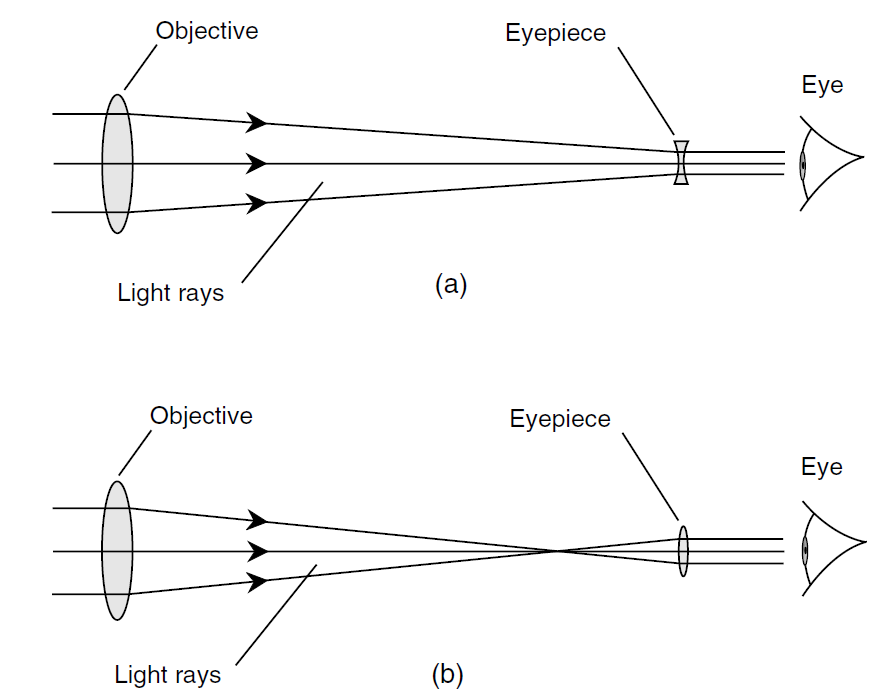


 الفيزياء الكلاسيكية
الفيزياء الكلاسيكية
 الكهربائية والمغناطيسية
الكهربائية والمغناطيسية
 علم البصريات
علم البصريات
 الفيزياء الحديثة
الفيزياء الحديثة
 النظرية النسبية
النظرية النسبية
 الفيزياء النووية
الفيزياء النووية
 فيزياء الحالة الصلبة
فيزياء الحالة الصلبة
 الليزر
الليزر
 علم الفلك
علم الفلك
 المجموعة الشمسية
المجموعة الشمسية
 الطاقة البديلة
الطاقة البديلة
 الفيزياء والعلوم الأخرى
الفيزياء والعلوم الأخرى
 مواضيع عامة في الفيزياء
مواضيع عامة في الفيزياء|
Read More
Date: 23-1-2021
Date: 10-11-2020
Date: 11-11-2020
|
GALILEAN REFRACTOR
Galileo Galilei, the astronomer who became famous during the 1600s for noticing craters on the Moon and natural satellites orbiting Jupiter, devised a telescope consisting of a convex-lens objective and a concave-lens eyepiece. His first telescope magnified the apparent diameters of distant objects by a factor of only a few times. Some of his later telescopes magnified up to 30 times. The galilean refractor (Fig. 1a) produces an erect image, that is, a right-side-up view of things. In addition to appearing right-side up, images are also true in the left-to-right sense. The magnification factor, defined as the number of times the angular diameters of distant objects are increased, depends on the focal length of the objective, as well as on the distance between the objective and the eyepiece.
Galilean refractors are available today mainly as novelties for terrestrial viewing. Galileo’s original refractors had objective lenses only 2 or 3 cm (about 1 in) across; the same is true of most galilean telescopes today. Some of these telescopes have sliding concentric tubes that provide variable magnification. When the inner tube is pushed all the way into the outer one, the magnification factor is the lowest; when the inner tube is pulled all the way out, the magnification is highest. The image remains fairly clear over the entire magnification-adjustment range. These instruments are sometimes called spyglasses.

Fig. 1. The galilean refractor (a) uses a convex objective and a concave eyepiece. The keplerian refractor (b) has a convex objective and a convex eyepiece.



|
|
|
|
لخفض ضغط الدم.. دراسة تحدد "تمارين مهمة"
|
|
|
|
|
|
|
طال انتظارها.. ميزة جديدة من "واتساب" تعزز الخصوصية
|
|
|
|
|
|
|
بمناسبة مرور 40 يومًا على رحيله الهيأة العليا لإحياء التراث تعقد ندوة ثقافية لاستذكار العلامة المحقق السيد محمد رضا الجلالي
|
|
|